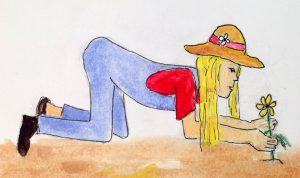In 2004 Dan Buettner headed a team with National Geographic and researchers of longevity to find places around the world where people lived longer. They named these places the Blue Zones. Buettner identified five geographic areas where people live statistically the longest: Okinawa (Japan); Sardinia (Italy); Nicoya (Costa Rica); Icaria (Greece) and Seventh-day Adventists in Loma Linda, California. They learned that people in these locations reached the age 100 at rates much greater than the national average in the United States. In Loma Linda, CA, Seventh Day Adventists live 10 years longer than the average North American does. In Icaria, Greece, an April 2009 study on the island of Icaria uncovered the location with the highest percentage of 90-year-olds on the planet – nearly 1 out of 3 people make it to their 90s. Furthermore, Icarians “have about 20 percent lower rates of cancer, 50 percent lower rates of heart disease and almost no dementia.” quoted from:. The Blue Zones: Lessons for Living Longer From the People Who’ve Lived the Longest
Teams of scientists studied these 5 Blue Zones to identify which lifestyle characteristics might explain why these people lived so much longer than other people. They found 9 characteristics common in all of the Blue Zones.
Buettner put this information into action. He joined AARP and the United Health Foundation to apply these 9 principles first to a city in MN called Albert. Within a year, the people who participated in this project added an estimated 2.9 years to their average life span while their health care costs dropped 49 percent. He started Blue Zones Projects across the nation with the mission to help people in additional communities to live longer and healthier lives. These projects have led to significant drops in employee absenteeism, double digit drops in obesity and smoking as well as millions of dollars saved in health care costs.
The 9 characteristics found in the Blue Zones are as follows:
1) Move Naturally: These people move (exercise) as part of their daily lives. They don’t go to the gym or lift weights. They grow their own gardens and don’t have conveniences for house and yard work. Many Okinawans practice martial arts. They do some form of activity that works their whole body to the point of breathing rapidly or sweating 5 to 10 hours a week.

2) Purpose: Each of these 5 groups had a sense of purpose for their lives. The research shows that having a sense of purpose can be worth up to 7 additional years of life expectancy.
3) Downshift: The longest living people have daily routines to slow down. The group of Adventists prayed, the Ikarians take naps while the Sardinians have a happy hour.
4) 80% Rule: People in the Blue Zones eat until their stomachs are 80 % full. They also eat their smallest meal in the late afternoon or early evening then don’t eat any more the rest of the day. This gives their digestion at least 12 to 14 hours to rest
5) Plant Slant: Beans such as soy beans, lentils or fava beans are the mainstay of most centenarian diets. Meat, usually pork, is eaten on the average only 5 times a month with serving sizes 3 to 4 oz.
6) Wine at 5 pm: With the exception of Adventists, the people in the Blue Zones drink alcohol moderately and regularly. They drink 1 to 2 cups of glasses of wine a day with friends or family.
7) Belong: Of the 263 centenarians interviewed, only 5 did not belong to a faith based community. Research shows that attending faith bases services 4 times a month will add 4 to 14 years of life expectancy
8) Loved Ones First: These centenarians put their families first by keeping aging parents and grandparents in the home or nearby. They are committed to a life partner (this can add up to 3 years life expectancy) and spend quality time with their children.
9) Right Tribe: These long living people chose or were born into communities or social circles that supported their healthy behaviors. One Blue zone, the Okinawans, create “moasis”, which are groups of 5 people who commit to each other for life.
I found reading about the Blue Zones made me think what I could do to make my life include all of these characteristics. Hopefully they will help you as you prioritize how you spend your time. Some of these characteristics are not that easy to create in our lives.
Knowing what you want to do to change your life is easier than implementing that change. If you feel you don’t have enough support to make positive changes to increase the quality and length of your life, now may be the time so to seek therapy. I would be happy to provide a free phone or in person consultation about what I can offer you as a therapist. Just call me at 586-799-2399.